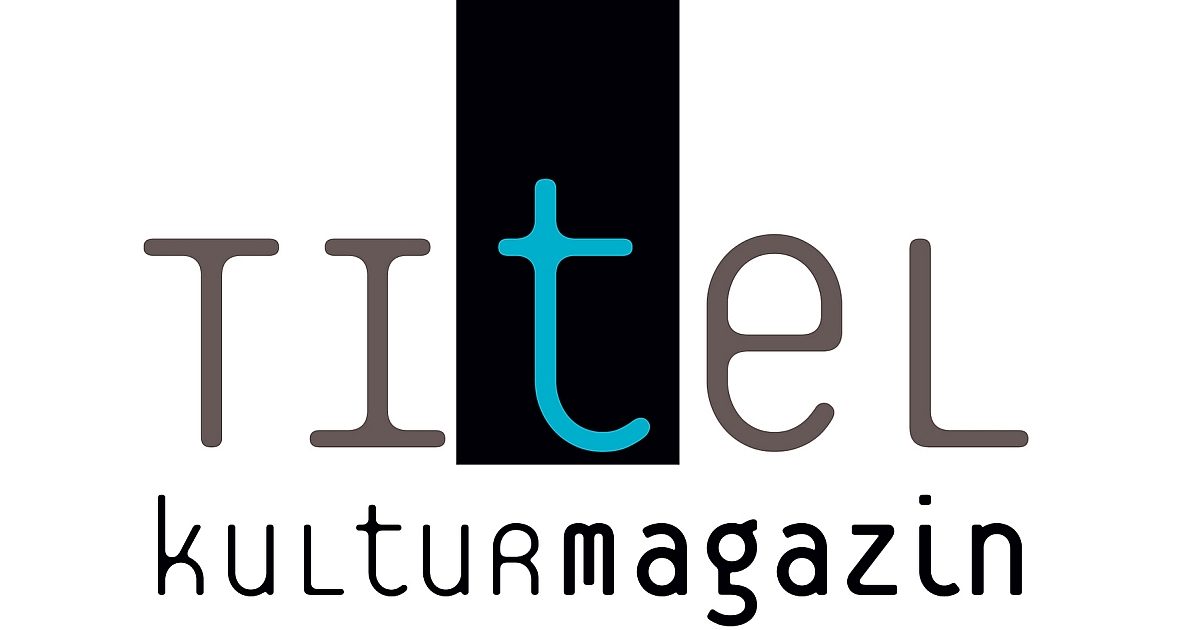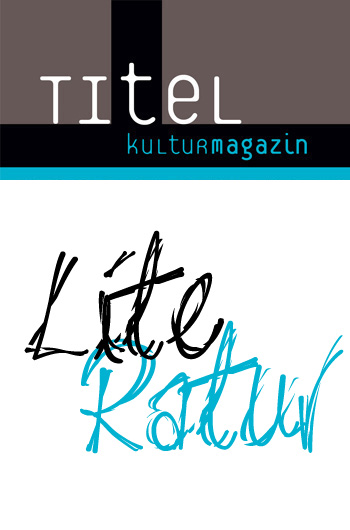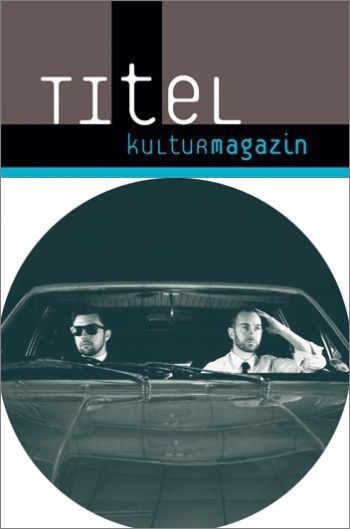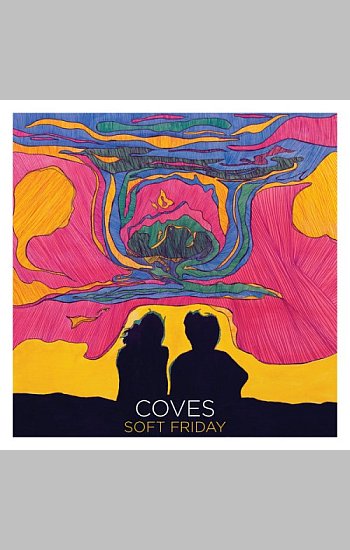Music | Bittles’ Magazine: The music column from the end of the world
Since its formation in ›2814‹ UK label Dream Catalogue have released some of the most beautiful, beguiling and futuristic music you could ever hope to hear. Superb albums by the likes of 2814, Telepath Remember and Yoshimi ably create lush aural worlds which form an emotional panorama which could make even the most hard-faced listener get all misty eyed. This is music best listened to with your eyes closed and your imagination open wide!
 Yet, over the years Dream Catalogue have shown that they have a lot more to offer the world than just Blade Runner inspired ambiance. Key releases by DJ Alina, Flash Kostivich and Lillith add beats and a sense of toughness to their repertoire. By taking the vaporwave template, and completely scrunching it up, these producers re-energise the ghosts of rave, techno and hardcore to create a strange, yet beautiful music which takes great delight in fucking with your head. Already termed as hardvapor by some, these cassettes are far too good to be revered only by a knowledgeable few, and will work on dance floors as well as in the mind.
Yet, over the years Dream Catalogue have shown that they have a lot more to offer the world than just Blade Runner inspired ambiance. Key releases by DJ Alina, Flash Kostivich and Lillith add beats and a sense of toughness to their repertoire. By taking the vaporwave template, and completely scrunching it up, these producers re-energise the ghosts of rave, techno and hardcore to create a strange, yet beautiful music which takes great delight in fucking with your head. Already termed as hardvapor by some, these cassettes are far too good to be revered only by a knowledgeable few, and will work on dance floors as well as in the mind.
All of which brings us to LA-based producer Diamondstein, who made his Dream Catalogue debut in March with the spectacular industrial ambient crunch of ›The Ridges‹. In a sonically rich and exciting record propulsive, angular rhythms mix with harsh drones and ambient pulses to create a piece of art which sounds likes nothing else around. From the hushed throb of opener Alone Not Alone and Whorf, to the tension-filled Nat Sherman Arpeggiator and the dirt-encrusted groove of Conversations, the record investigates a shadow-ridden world which is thrilling from beginning to end. Spectacularly dark, this is more nightmare than dream, and all the better for it.
So far, little is known about the enigma that is Diamondstein. So, when the opportunity arrived to interview the artist I simply couldn’t refuse. In the following piece we discuss The Ridges, Dream Catalogue, soundtracks, playing live,and lots more.
By way of introduction, can you tell us a bit about who you are and what you do?
Sure. I’m a producer based in Los Angeles and Detroit. Diamondstein is a project of mine that focusses on a sort of techno-inspired ambient electronic music.
Your new album ›The Ridges‹ first arrived in discerning record stores and download sites back in March. For those who haven’t heard it before, what can they expect?
›The Ridges‹ is my debut album with a London-based label called Dream Catalogue. People that know Dream Catalogue mostly know them for being a pretty prolific label in the Vaporware scene, but my album is a far cry from what people consider vaporwave. If anything, this record is a grim backdrop to the kind of world that Vaporwave proposes. The whole album runs about 40 minutes through 6 songs, and is intended to be listened to from beginning to end in a single listen, though each song should stand on its own individually. A lot of people draw the comparison to soundtracks from people like Vangelis and Atticus Ross, though I think the songs are a bit more structured and beat driven than soundtrack music. Maybe compare it to artists like Haxon Cloak and Holy Other.
If you had to pick one song to sell the album, which would it be and why?
The song that best encapsulates the overall tone of the record is probably the second song, Nat Sherman Arpeggiator, which is the first song that I wrote for the record, and really the track I wrote the whole album around. It was the first song I wrote that really felt like the kind of music I wanted to write, and has some sounds that have become central instruments to other pieces I wrote for this record, and have been working on since. Usually I write things with a consistent 4/4 thump, but NSA is also in 3/4, so it has the chaotic whirring feeling that I want people to associate with Diamondstein.
Nat Sherman Arpeggiator is, indeed, a great track. Can you tell us a bit more about it?
This song all started with the drums and the 3/4 time signature. The time signature was intentional, because I’d been playing a lot with polyrhythmic sequences around the time I wrote it, but the drums and the swing of the synth sequence were happy accidents. I had just started toying with a new distortion plugin I found, and figured out somehow that if you layer the channel the right way, there’s a strange sidechain effect that gives the noise a pulsing effect. The song, even before the thunderous percussive elements were added, also has a bit of a frantic weather feeling to it, which creates a physical atmosphere to the sound. It all just feels like you’re not in control when listening to it, which is a theme I like putting in a lot of my music.
Another highlight are the twinkling melody and tension filled synths of Whorf, which acts as a moment of calm, allowing the listener to almost get their breath back and prepare for the rest of the LP. How difficult was it to decide the track order of the album?
Quite easy actually. I wrote the songs to fill in the plot structure of the album as a whole, so after each song had been finished, I immediately had a pretty clear idea of what feeling or song point of view was lacking and needed to be written to fill the whole album narrative. Whorf was the second to last song I wrote, and did so because there was a noticeable reprieve needed after the fourth song on the record, Conversations. I needed something to offset the intensity that just happened on the album, and set-up what was going to happen to end the record. Also, I wanted a song that would encourage people to reflect a bit on the album up to that point – something with enough space and tranquillity to not be too distracting. Plus, I really liked the chords that ended the previous song and didn’t feel like I got the most of them, so all of Whorf is basically that chord progression repeating itself with different instruments and tones randomly on top of each other.
I could easily see myself dancing to tracks such as RE and The Carving. Have you ever considered making a straight-up club record?
Yes, very much so. I’m working on a few now actually. Most of this album is pretty slow (around 100 BPM), which is a tricky speed to DJ this kind of music, so some of what I’m working on in this next record is working at around 118-124 to see what happens. A lot of what I really like to listen to in my spare time falls somewhere on the techno spectrum, so even before the new stuff I’m working on, techno is usually where I start every song. However, every time I start that way, I go off the rails a bit and wander into something that’s not very DJ friendly – which obviously I don’t mind. RE for instance is really difficult to DJ I’m starting to realize, because it starts and stops sections at fairly arbitrary times. I’d love to hear how someone uses that song in a set, so I can figure it out too. Ha.
Electronic website Bleep describe the album as »Dream Catalogue going terminator techno«. Do you think this is a fair description of ›The Ridges?‹
 I guess that’s fair to some degree. I love that everybody has their own weird way of labelling this record, especially compared to other things on Dream Catalogue. I’d like to think that my record is a lot more about the shady alleys and empty churches on the periphery of all the action in terminator more than the high speed action sequences in terminator though.
I guess that’s fair to some degree. I love that everybody has their own weird way of labelling this record, especially compared to other things on Dream Catalogue. I’d like to think that my record is a lot more about the shady alleys and empty churches on the periphery of all the action in terminator more than the high speed action sequences in terminator though.
The cover image is quite striking! Where did it come from?
This is actually a still from the music video of Nat Sherman Arpeggiator, directed by a friend of mine named Jason Michael Roberts. When I was speaking with HKE at Dream Catalogue about the vision of the record, he and I both wanted something that stood in the face of typical vaporwave aesthetics, and a simple black & white portrait of someone looking off into the upper distance seemed right for both what the album was about, and what it meant in regards to Dream Catalogue as a whole. Plus, with the girl looking up at an unknown distraction, it says a bit about how I want Diamondstein to be perceived – more like a manipulator than an entertainer.
Speaking of Dream Catalogue, how did you first hook up with the lovely people there?
I didn’t know much about what they did, but I found them somehow and really liked the kind of semi-fictitious future world that’s so apparent in all of what they do. Then I heard the 2814 album, and blindly hit them up because it’s such a fantastic record. HKE, the label head replied almost immediately and was incredibly complimentary and open to my music. It was clear immediately that he got what I was trying to do, and we were on the same wavelength, so I decided to put ›The Ridges‹ out through them. They’re a really fantastic label with a crystal clear vision, so I’m lucky to be a part of it all.
There seems to be a strong visual element to the album, with all six tracks conjuring vivid images in the mind. Is soundtrack work something that interests you?
Yeah, soundtracks are one of the first things people tend to mention or reference when they listen to my album. It’s a huge compliment because my goal isn’t necessarily to write soundtracks, but rather make very visually inspired, atmospheric music. I think what people really mean when they say that my album sounds like a soundtrack, is that they can imagine the visual identity of the songs, which is really powerful and important to me. When I first started working on a lot of this, I would say that I was trying to make the music of places more than songs. It’s not quite this specific anymore, but the idea still mostly applies to how I approach my writing and what I get most excited about.
If you could compose the soundtrack to any film, real or imaginary, which would it be and why?
Oooooh – that’s a really interesting question. My first thought would probably be the horror film The Witch that came out last year. This is kind of counter-intuitive since that movie is so well-set in the natural world, where synth instrumentation wouldn’t make a lot of sense, but I just loved the emotional vacancy and harshness of that album, and it’d be a real trip to try and capture that through my own interpretation. Another would be the film Goodnight Mommy for similar reasons. I love those movies that just feel so emotionally jarring instead of slasher film horror. Finally, there’s this really strange museum in LA called The Museum of Jurassic Technology, which I would love to write accompanying music for each room and display – some songs that make you feel how the weird little exhibits make you feel. I guess my long answer to that question kind of contractions the previous question. ha.
You are known to cover your face with a veil when you play live, something which adds a little mystique to the music. Was this the idea behind the gesture? And, is there enough mystery in today’s music world?
Yeah, as I’ve been reworking my live set I’m starting to reconsider that idea actually. The initial reason I did it, and it still stands true, is that I don’t like the idea of people focussing on me or my personality when it comes to my music, so I wanted to cover my face to take that away a bit and force people to focus on what I was doing on stage, the visuals, or of course the music itself. Diamondstein isn’t necessarily a character, but it’s definitely only one isolated component of my personality as a whole, so I want to do everything I can to make people focus on that, and not who I am. In terms of the mystery I think is important for some artists, and irrelevant for others. I think sometimes having an intimate relationship with the artist him/herself, and getting to see them for who they are is part of the music experience – it makes them more relatable and their music more sincere. I think the kind of thing I’m doing makes that less important, so I try to lean more into how the music is meant to make people think or feel, instead of who’s responsible for making/performing it.
Speaking of playing live, do you have any plans to tour Europe or the UK anytime soon?That’s certainly the goal. I’m hoping to sort some of that stuff out sooner than later.
How did you first get into music? And what made you take that leap to create music yourself?
My parents are both super musically inclined, so it’s been like a first language for me since I was quite young. My mom is a brilliant concert oboist and music teacher. My dad was a really talented guitar player. He played a bit of a strange style of finger-picking inspired by where I grew up in Appalachia, but was really interested in a lot of the forefathers behind what I’m doing now. When he first heard some of my music, he immediately made a CD full of Alan Parsons Project songs, and a got me a deluxe vinyl of Dark Side of the Moon. It was a really nice gesture, and was more spot on that I think he realized.
I had always written music in some capacity, but started getting a lot more serious about sounds and experimental music in my really early 20s. I have made a career as a writer, which is a pretty mentally and emotionally draining way to feed oneself, and I started to realize that in my most exhausting states of existential anxiety, I would turn to the piano as the most sincere reprieve. Eventually, I started plucking around on Ableton (again) to push some of my ideas from the piano. Eventually, that segued into synthesizers, and now here I am. I find myself listening to the world very closely, and trying to record as much of it as I can to try to create music out of almost anything.
If people could learn one thing from your music, what would it be?
Learn one thing from my music? Maybe that music and songs are defined more by their emotional intention than by their style or structure. People seem to have a really hard time categorizing my music, and this record specifically, but they always know very clearly how it makes them feel. I think this is why I usually get more comparisons to something people have seen instead of something they’ve heard. I love this.
What three albums should everybody in the world hear?
Oh Jesus. Well, I think Pink Floyd’s Dark Side of the Moon is one of the most complete albums I’ve ever heard. It’s such a full thought, and seems so perfectly paced – a true masterpiece that everyone should give the full attention it deserves. Kiasmos’s self-titled record from 2014 was a really special one I thought. It’s a nice mix of techno sensibility and ambient pianos. It’s just heartbreakingly beautiful and emotional from the start – typical Olafur Arnolds fashion. Finally, since we’ve discussed soundtracks a few times in this thing, the OST for a sci-fi film called Beyond the Black Rainbow, by Sinoia Caves, is absolutely incredible. The synth work makes me very jealous. The film as well is one of the most visually stimulating films I’ve ever seen.
Do you have any final words for our readers?
Thanks for listening to my record. It means a lot for me to know that people are listening hard, and thinking hard about what they’re hearing. Also, you should check out a couple other Dream Catalogue records – 2814’s Birth of a New Day, which is really the pinnacle of the label in my opinion, and Yoshimi’s Tokyo Restricted Area. The Yoshimi record in particular absolutely blew my mind. I love the sounds that dude uses in his work.
The album is available now on cassette and digital download from the label’s Bandcamp page Dream Catalogue. I highly recommend you give it a try!


